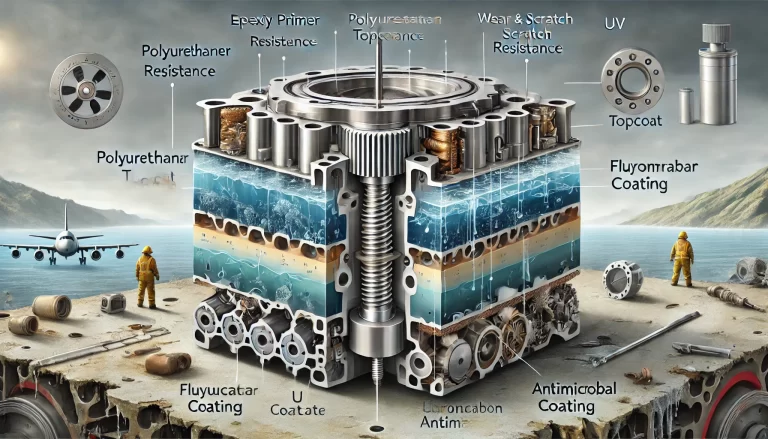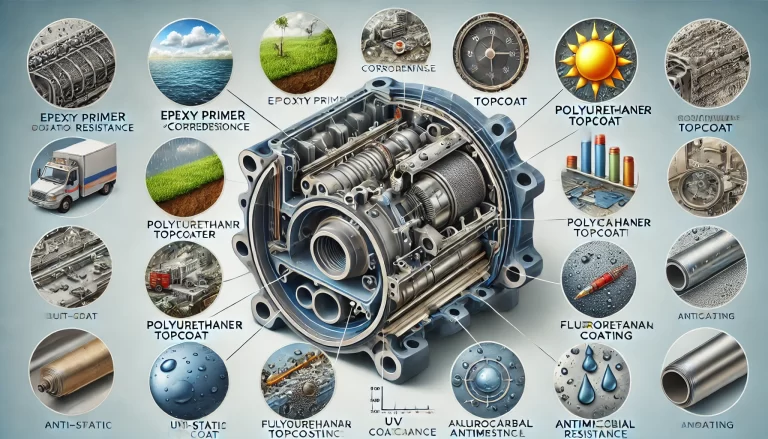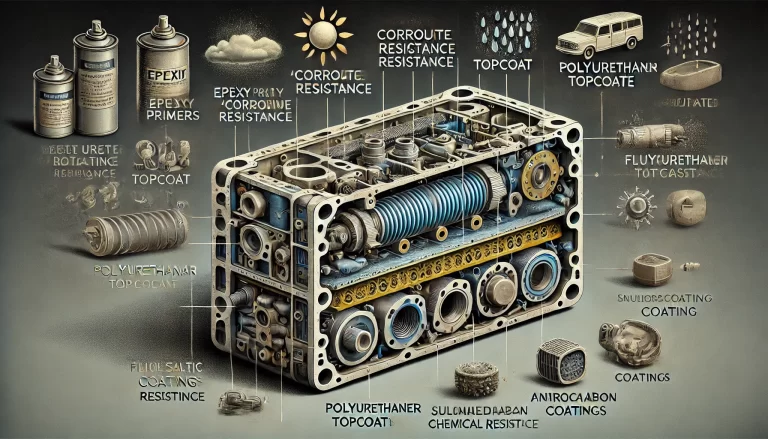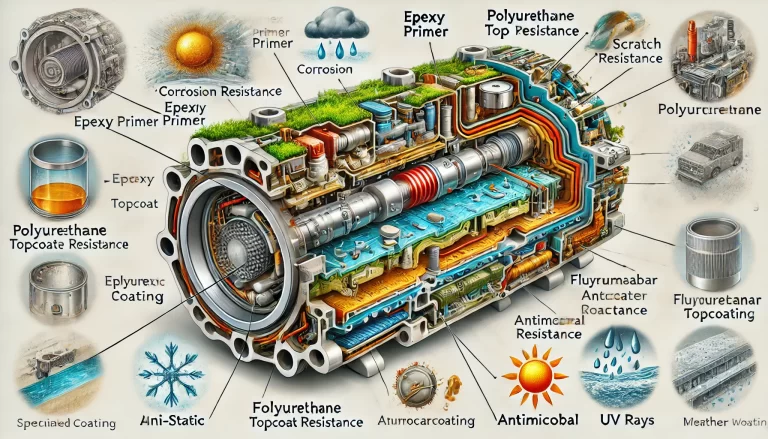Introduction
In the manufacturing of instrument equipment, coatings are not just for enhancing aesthetics—they play a crucial role in ensuring the long-term stability and functionality of devices. Instrument casings and critical components are often exposed to various environmental conditions, making the choice of coatings vital. The right coatings must meet requirements such as corrosion resistance, wear resistance, weatherability, and chemical resistance. Additionally, coatings influence the appearance, operability, and service life of equipment. This article explores the fundamental requirements, composition, application techniques, environmental adaptability, and industry standards for instrument coatings.

1. Functional Requirements of Instrument Coatings
1.1 Corrosion Resistance
Most instrument equipment is made of metal, which is prone to corrosion caused by moisture, salt spray, and chemicals. One of the primary functions of coatings is to protect the metal surface from corrosion by preventing water and contaminants from penetrating the substrate. Typically, epoxy resin-based primers are used due to their excellent resistance to moisture, oxidation, and chemical corrosion.
1.2 Weatherability and UV Stability
For outdoor applications, coatings must withstand prolonged exposure to sunlight without fading, cracking, or degrading. Fluorocarbon coatings (PVDF) are widely used in such cases because of their superior UV resistance, high-temperature stability, and long-term durability. These coatings ensure that instruments maintain both their functionality and aesthetic appeal even in harsh outdoor conditions.
1.3 Wear Resistance and Mechanical Strength
Instruments that require frequent operation must have coatings with high wear resistance. The coating should provide sufficient hardness and toughness to withstand friction, impacts, and scratches. Polyurethane topcoats are commonly used for their exceptional wear resistance and impact resistance, making them ideal for heavily used surfaces.
1.4 Chemical Resistance
Many industrial environments expose instrument equipment to corrosive chemicals such as acids and alkalis. To protect against chemical damage, coatings must have excellent chemical resistance. Epoxy resin coatings are highly effective in this regard due to their strong adhesion and ability to block chemical penetration, ensuring long-term protection.

2. Composition of Instrument Coatings
Different functional needs determine the choice of coating materials. Typically, instrument coatings consist of the following layers:
2.1 Primer
The primer serves as the foundation of the coating system, enhancing adhesion to the substrate, providing anti-corrosion protection, and filling minor surface imperfections. Common primer formulations include epoxy resins, zinc powder, and zinc phosphate, which improve adhesion and prevent oxidation of the base material. Epoxy primers are particularly popular for metal surfaces due to their strong bonding capability and superior anti-corrosion performance.
2.2 Topcoat
The topcoat is the outermost protective layer that interacts with the environment. It enhances protection, appearance, and durability. The main requirements for topcoats include high hardness, UV resistance, and temperature resistance. Polyurethane and acrylic coatings are commonly used as they offer excellent UV resistance, corrosion resistance, and scratch resistance while ensuring a visually appealing finish.
2.3 Specialized Functional Coatings
For specialized applications, additional coatings with unique properties may be required:
Anti-static coatings: Used in electronic instruments to prevent static buildup, which can damage sensitive components. These coatings often contain conductive fillers such as carbon nanotubes or metal oxides.
Antimicrobial coatings: Essential in medical instruments and food processing equipment, antimicrobial coatings help prevent bacterial growth. Common antimicrobial agents include silver ions and copper ions.
3. Coating Thickness and Application Process Control
The thickness of the coating directly impacts its protective performance and aesthetic quality. If the coating is too thin, it may not provide adequate corrosion resistance; if too thick, it may crack or peel over time. The recommended thickness is determined based on ISO 12944 standards:
Primer thickness: 20-50μm to ensure strong adhesion and corrosion protection.
Topcoat thickness: 30-70μm, adjusted based on durability, weather exposure, and aesthetic requirements.
Total coating thickness: 80-120μm to ensure long-lasting protection.
To ensure optimal results, strict control of coating uniformity, drying time, and surface smoothness is necessary, as these factors directly affect performance and longevity.
4. Environmental Adaptability of Instrument Coatings
Different environments impose distinct demands on coatings. Selecting the right coating based on application conditions is essential:
Outdoor instruments (e.g., traffic monitoring, meteorological equipment): Require high weather resistance and UV protection, making PVDF coatings the best choice.
Industrial instruments (e.g., chemical and petroleum equipment): Must endure high temperatures and chemical exposure, so epoxy coatings are ideal.
Medical instruments (e.g., surgical and laboratory equipment): Need antibacterial and anti-fingerprint coatings, often containing silver ions.
Electronic instruments (e.g., power and telecom equipment): Require anti-static coatings to prevent damage from static electricity.

5. Industry Standards and Quality Testing
To guarantee coating quality, industry standards must be followed. International standards such as ISO 12944 specify requirements for coating thickness, adhesion, corrosion resistance, and UV durability. Standardized testing methods ensure that coatings meet the long-term protection needs of instruments:
Salt spray test (ASTM B117) to evaluate corrosion resistance.
Adhesion test (ISO 2409) to assess bonding strength between the coating and substrate.
UV aging test (ASTM G154) to measure weatherability.
Impact resistance test (ASTM D2794) to ensure mechanical durability.

6. Conclusion
The selection of instrument coatings is not merely about aesthetics; it is a crucial factor in ensuring long-term protection against environmental and mechanical stresses. Choosing the right combination of primers and topcoats, precisely controlling coating thickness, and ensuring resistance to corrosion, wear, UV radiation, and chemicals are fundamental to extending the lifespan of instrument equipment.
By selecting coatings that comply with international standards and are tailored to specific environmental conditions, manufacturers can significantly enhance instrument performance, durability, and reliability. Proper coating application not only safeguards instruments but also optimizes their operational efficiency and long-term value.
